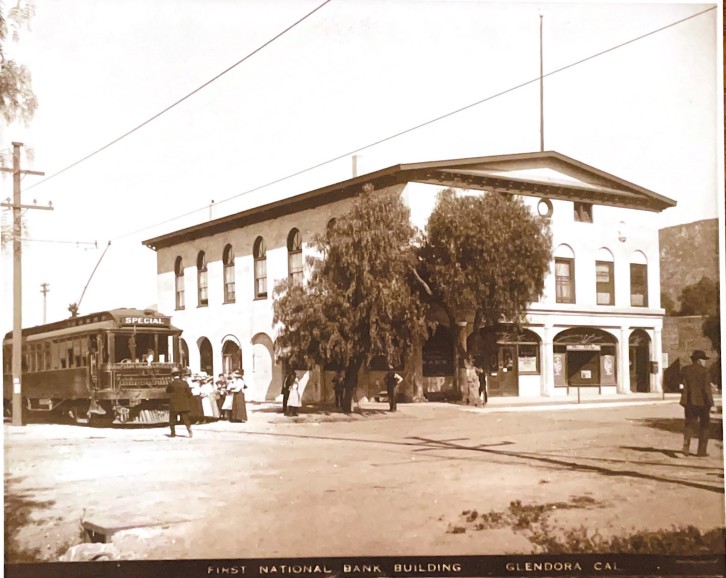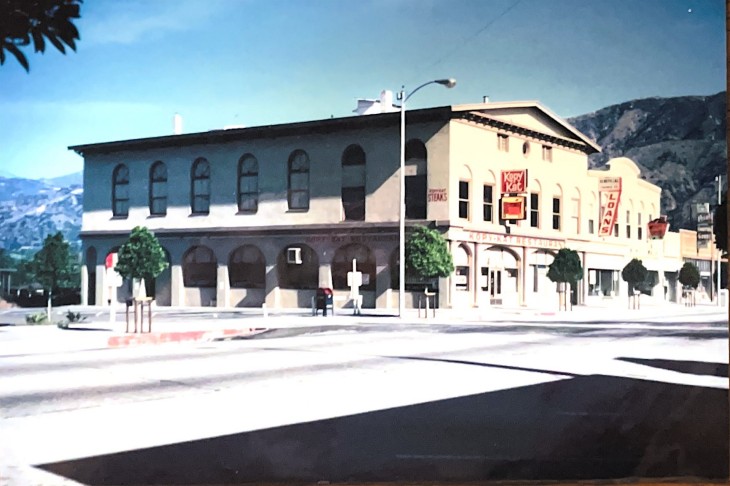First National Bank/Opera House
Introduction
Text-to-speech Audio
Built in 1906 by C.A. Weaver, this is one of the most historic buildings in downtown Glendora. When the building first opened it was occupied by the First National Bank on the main floor while the city’s Opera House made up the second floor. The First National Bank was opened in 1907 with Carrol Whitcomb, son of George Whitcomb as President and M.C. Whitcomb as cashier. Early photographs of the building show statues of Mozart and Beethoven decorating the outside of the Opera House. On the north side of the building double doors opened up to a grand entry way leading to the second floor of the building, this entry way still remains today mostly as it did in those early years.
Images


Backstory and Context
Text-to-speech Audio
In those early days the Opera House was the cultural and social center of the whole city. It housed the city’s library for a short while, then in 1908 the Women’s Club formed and they held their first meetings there until the completion of their own clubhouse. Many musical shows took place there. The Masons held their meetings here, as well, until their own Masonic Lodge was built. Since city hall hadn’t been built yet, it was the early meeting place for many of the city’s founding fathers. In 1937, Bank of America took over the main floor and First National bank and occupied the space until 1970. Various Glendora merchants have occupied the space since then such as Martha’s Candies, the Andrews family who owned the Venberg Store, and the Sizzler restaurant. The building is presently occupied the Village Vault Restaurant. The original vault door still remains and can be seen inside the Village Vault Restaurant.
Sources
The First 100 Years: 1887 - 1987. "From Opera House & Bank to Restaurant" by Bobbie Battler. Glendora, CA. Liberty Enterprises, 1986.
Glendora Historical Society
Glendora Historical Society
